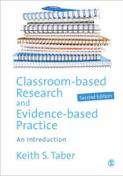Educational Research Methods

A site to support teaching and learning...

Analytical pluralism
This is a personal site of Keith S. Taber to support teaching of educational research methods.
(Dr Keith Taber is Professor of Science Education at the University of Cambridge.)
2016-2019
“...a range of complementary analytical lenses that draw upon congruous theoretical perspectives can be applied to interrogate a data set” (Taber 2008: 98)
Taber, K. S. (2008) Of Models, Mermaids and Methods: The Role of Analytical Pluralism in Understanding Student Learning in Science, in Ingrid V. Eriksson (Ed.) Science Education in the 21st Century, pp.69-106. Hauppauge, NY: Nova Science Publishers.
When might analytical pluralism be appropriate?
In confirmatory research it is usually clear exactly what kind of data is needed, and how it should be analysed, to answer research questions. However in discovery research, working in a more exploratory mode, this may not be the case, and there may be a case for subjecting particular data to analysis from a range of potentially relevant perspectives.
“...just as different ‘slices of data’ ... may be useful in providing different perspectives on a research focus, so may complementary analytical frameworks be useful in ‘interrogating’ a specific data set. ...
the purpose of the analytical pluralism proposed here is somewhat different from the use of multiple data sources. Whereas the rationale for triangulation is to see if the same interpretations can be supported from different ‘slices’ of data, the purpose of analytical pluralism is to offer alternative insights from the same data set.” (Taber, 2008: 71)
This approach may be sensible when we have reason to believe the research focus is multifaceted:
“a data set is ‘subjected’ to inspection through a series of analytical ‘lenses’. These analytical lenses will each be suitable for uncovering a particular potential feature of the data set” (Taber, 2008: 72)
Maintaining coherence when adopting analytical pluralism
A research study needs coherence, so the nature of analysis should reflect the conceptual framework and any theoretical perspective established before framing the research questions. Analytical pluralism does not imply any basis for analysis is equally appropriate. But in some projects there may be a range of analytical lenses which are consistent with the position underpinning the project. This may link to our ontological understanding of the research focus as a complex phenomenon:
“data concerning complex phenomena (such as learning) may be sometimes best understood by when examined in the light of a number of ‘analytical lenses’, i.e. analytical tools deriving from distinct theoretical perspectives. Such ‘analytical pluralism’ is justified where each theoretical perspective only provides a partial picture of the process being studied, and where the distinct perspectives may be considered to be congruous”. (Taber, 2008: 70)
Taber, K. S. (2008) Of Models, Mermaids and Methods: The Role of Analytical Pluralism in Understanding Student Learning in Science, in Ingrid V. Eriksson (Ed.) Science Education in the 21st Century, pp.69-106. Hauppauge, NY: Nova Science Publishers.
As an example:
The study cited here adopted a constructivist perspective on student learning:
“showing how several different (but compatible) perspectives provide suitable analytical tools to interpret data into student learning...
“These lenses draw on perspectives that are discussed in the science education literature:
1) modelling mentality: student understanding of the roles of models and representations;
2) learning impediments: the role of prerequisite knowledge in channelling and supporting new learning;
3) student ontologies: the arrangement of concepts within a learner’s cognitive structure, and the nature of conceptual change.
Each of these distinct perspectives is consistent with the contingent-constructivist position, and so it is argued that each perspective, inter alia, can help illuminate aspects of the data.” (Taber, 2008: 76, 78)
